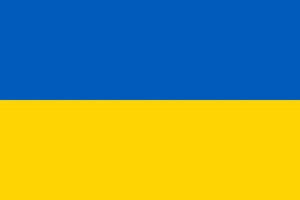Language/Ukrainian/Grammar/Nouns-and-Gender
As a Ukrainian language teacher with over 20 years of experience, I believe that learning the gender of nouns is a crucial aspect of mastering the language. In this lesson, students will learn how to identify and correctly use masculine, feminine, and neuter gender nouns in Ukrainian.
Gender in Ukrainian
Like many languages, Ukrainian has gendered nouns. However, unlike English, which only distinguishes between masculine and feminine nouns, Ukrainian also has a third gender: neuter. It's important to learn the gender of nouns in Ukrainian because it affects the way that other parts of the sentence, such as adjective endings, are formed.
To determine the gender of a noun in Ukrainian, you need to look at the ending of the word. In general, masculine nouns end in a consonant, feminine nouns end in "-а" or "-я", and neuter nouns end in "-о" or "-е". However, there are some exceptions to these rules, so it's best to memorize the gender of nouns as you learn them.
Here are some examples of Ukrainian nouns and their genders:
| Ukrainian | Pronunciation | English |
|---|---|---|
| чоловік (masculine) | [tʃɔˈlɔwi(ː)k] | man |
| жінка (feminine) | [ˈʒiɲkɑ] | woman |
| дитина (neuter) | [diˈtinɑ] | child |
Notice how the endings of each noun correspond to their genders.
Using Gender in Sentences
Knowing the gender of a noun is important because it affects the endings of other parts of the sentence. For example, if you want to describe a noun with an adjective, you need to use the appropriate ending for the gender of the noun.
Here are some examples:
- Мій батько -- My father
- Моя мати -- My mother
- Моє кохання -- My love (neutral gender)
- Великий будинок -- Big house (masculine gender)
- Велика книга -- Big book (feminine gender)
Notice how the adjective endings change depending on the gender of the noun. When the noun is masculine, the adjective takes the "-ий" ending. When the noun is feminine, the adjective takes the "-а" ending. And when the noun is neuter, the adjective takes the "-е" ending.
Another way in which gender affects the sentence is through the use of pronouns. Ukrainian has different pronouns for masculine, feminine, and neuter nouns. For example:
- Це він -- This is he (masculine gender)
- Це вона -- This is she (feminine gender)
- Це воно -- This is it (neutral gender)
Tips for Learning Gender in Ukrainian
Learning the gender of nouns in Ukrainian can be challenging, but there are some tips that can make the process easier:
- Memorize the endings of nouns and associate them with their gender.
- Pay attention to the gender of the people, animals, and objects around you and try to use the correct gendered nouns and adjectives when describing them.
- Practice using gendered nouns and adjectives in context by writing sentences and having them corrected by a teacher or native speaker.
With practice and persistence, you can master the gender of nouns in the Ukrainian language.
Conclusion
In this lesson, we've covered the basics of gender in Ukrainian nouns. Remember that in Ukrainian, nouns can be masculine, feminine, or neuter, and that the gender of the noun affects the endings of other parts of the sentence. By memorizing the endings of nouns and practicing their use in context, you can become proficient in the use of gendered nouns in Ukrainian.
Sources
Videos
Ukrainian lesson 3. Gender of nouns - YouTube
Plural of Nouns in the masculine gender in Ukrainian # 22 - YouTube

